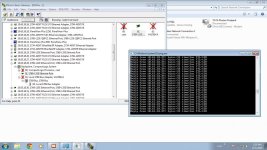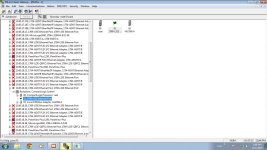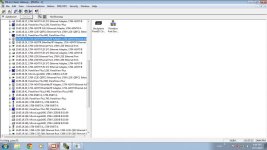Hola Everyone,
I am facing a weird situation here. Please help me out. I will try to put it as detailed as possible.
I have a 1769-L32E CompactLogix processor (IP : 10.65.18.29) connected to just one AB HMI (IP: 10.65.18.30) over Ethernet via a switch. This small network is isolated to the rest of plant Network. The client wanted to include this small network as well.
When they connected the switches with E-net cable, the whole plant system went down. Quickly they removed the cable and isolated it again to revive the plant back.
Guessing it as an IP conflict, I pinged both the plc's and hmi's ip in the plant/SCADA network, to find whether the address already existed. After I could not get reply from PLC's IP, I later found the HMI's IP to be the cause, I changed it to [10.65.18.74].
To avoid the risk of line going down again we did this on shutdown and connected both the networks without any trouble. Everything was perfect until the shutdown was over. The controller in question again faulted and they had to remove it again from the network for everything to be normal.
Suspecting the PLC now. I did the following:
1) Connected my PC to the SCADA network and pinged my PLC's IP (10.65.18.29) which is not connected to this network for which I was getting reply surprisingly as I was not able to ping it before the shutdown. So I decided to browse through the Rs-Linx and am getting a weird status. (SCREENSHOT 1)
2)I connected directly to this PLC and it pings as well as browses on the linx (SCREENSHOT 2)
3) A bit confused, again connected to the SCADA network from a different access point, I was able to ping the ip address again but without it browsing in the linx.(SCREENSHOT 3)
So I am thinking, if it pings then there must be a device with that add on the n/w but why would it not show on the linx.
I don't know what I am missing here, but I am sure it is a silly one.



I am facing a weird situation here. Please help me out. I will try to put it as detailed as possible.
I have a 1769-L32E CompactLogix processor (IP : 10.65.18.29) connected to just one AB HMI (IP: 10.65.18.30) over Ethernet via a switch. This small network is isolated to the rest of plant Network. The client wanted to include this small network as well.
When they connected the switches with E-net cable, the whole plant system went down. Quickly they removed the cable and isolated it again to revive the plant back.
Guessing it as an IP conflict, I pinged both the plc's and hmi's ip in the plant/SCADA network, to find whether the address already existed. After I could not get reply from PLC's IP, I later found the HMI's IP to be the cause, I changed it to [10.65.18.74].
To avoid the risk of line going down again we did this on shutdown and connected both the networks without any trouble. Everything was perfect until the shutdown was over. The controller in question again faulted and they had to remove it again from the network for everything to be normal.
Suspecting the PLC now. I did the following:
1) Connected my PC to the SCADA network and pinged my PLC's IP (10.65.18.29) which is not connected to this network for which I was getting reply surprisingly as I was not able to ping it before the shutdown. So I decided to browse through the Rs-Linx and am getting a weird status. (SCREENSHOT 1)
2)I connected directly to this PLC and it pings as well as browses on the linx (SCREENSHOT 2)
3) A bit confused, again connected to the SCADA network from a different access point, I was able to ping the ip address again but without it browsing in the linx.(SCREENSHOT 3)
So I am thinking, if it pings then there must be a device with that add on the n/w but why would it not show on the linx.
I don't know what I am missing here, but I am sure it is a silly one.







